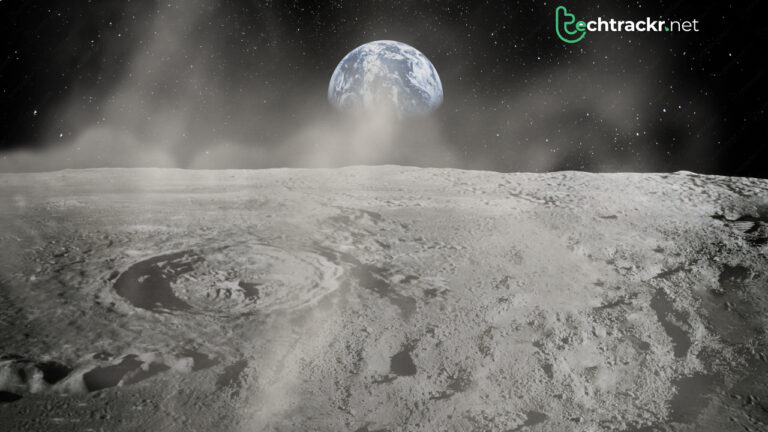
Moon dust, or lunar regolith, is pretty intriguing and puzzling stuff. Picture it as this fine, powdery substance that came to be after eons of little meteorite smacks, grinding rocks into these itty-bitty pieces. What’s quirky about this lunar dust is that it’s like a magnet – it sticks to everything, whether it’s astronaut gear or equipment, all because of its electric charge.
Unlike our home planet, the Moon doesn’t have the whole weathering and erosion gig going on, which means it holds onto the story of its surface in layers of dust. Some clever folks even think we might use Moon dust for things like protecting against radiation or snagging valuable resources. Figuring out this lunar dust is a must for future lunar missions and the dream of setting up a base on the Moon.
The unsolved puzzle
The Moon might be the last place you’d expect to find windstorms, but it has these swirls on its surface that appear as if they were created by the wind. However, since the Moon lacks an atmosphere, scientists had to dig deeper to find an alternative explanation. As it turns out, there’s a link between these swirls, local magnetic irregularities, and the way the Moon’s surface is shaped.
Moon swirls are these funky patterns on the lunar surface that have had scientists scratching their heads for years, trying to figure out what causes them. You can actually spot them from Earth, but it took until 1966 for NASA’s Lunar Orbiter II to capture a decent picture of one. One of the big ones, called Reiner Gamma, is even visible through a regular old amateur telescope.
Also read: After Chandrayaan-3’s success will ISRO foray into space tourism?
What are those funky marks on the Moon?
A bunch of scientists from the Planetary Science Institute, with Deborah Domingue leading the way, just did a study. They checked out the texture of the spots where these Moon swirls pop up. They focused on a spot in Mare Ingenii and used photometric analysis to figure out what’s causing these things. This technique looks at how stuff bounces light around and how those bouncing properties change depending on how the sunlight hits it and where your spacecraft is looking from.
Over time, folks who keep an eye on the Moon have tossed around a bunch of ideas to explain these funky marks. Some say that when comets smack into the Moon, they could kick up dust and create these swirls. And hey, those collisions might also be the reason behind the strange magnetic stuff connected to these swirls.
Chances are, the sun’s gusty solar wind has something to do with it too. This happens all the time, and it might be why some of these swirls look like they’re changing faster. Here’s the deal: There’s this magnetic weirdness going on that shields the bright lunar surface stuff, probably silicates. That’s what gives the swirl its pattern because the protected stuff is shinier than the stuff outside the magnetic force field. But here’s the twist: Sometimes, the spectral properties of the swirls don’t quite match up with what you’d expect from shielded materials.
Are magnetic fields the reason?
Maybe, just maybe, magnetic fields sort out and capture teeny-tiny floating dust particles that are electrically charged. These dust bits are the tiniest of the lunar dust family and happen to be made of minerals that are shinier than their larger dust cousins. Those big dust grains, they’re a bit stubborn when it comes to getting moved around by electricity.
Now, here’s the twist: The darker dust has tiny specks of iron at the nanometer scale. This stuff is more likely to get separated by magnets and end up in the dark parts of the swirls. And the irony? Solar wind radiation could be the culprit for making this nanometer-scale iron in the first place!
Also read: 60 years of cosmic silence: Should humanity continue its quest for extraterrestrial life?
Are electric fields moving dust particles?
Here’s another thought that’s kind of related: There’s this idea that suggests these not-so-strong electric fields, which happen when the magnetic quirks and solar wind stuff get chatty, might be pulling or pushing those tiny dust specks around. And here’s a new theory that popped up in 2022: Maybe the landscape itself, like the hills and valleys on the Moon, could be influencing where these swirls end up.
So, here’s the scoop from the team’s fancy photometric analysis: When they checked out the swirl zone, they noticed that the roughness between grains was pretty much the same all over the place. But, when they looked at the dirt in the dark streaks, those grains had a more complex structure going on. Plus, they saw that the stuff in the bright areas had a different makeup compared to the dark spots, which lines up with what you’d expect if dust was getting gathered and separated.
“The evidence, which includes recent correlation of topographic lows with the bright areas of the swirls, tells a story that more than one process is involved in their formation”, said lead author Deborah Domingue. “We definitely see evidence that the bright areas are less radiated, but this doesn’t explain all the properties of the swirls. Something else is operating, and the textures suggest dust collection and segregation are part of the tale.”
